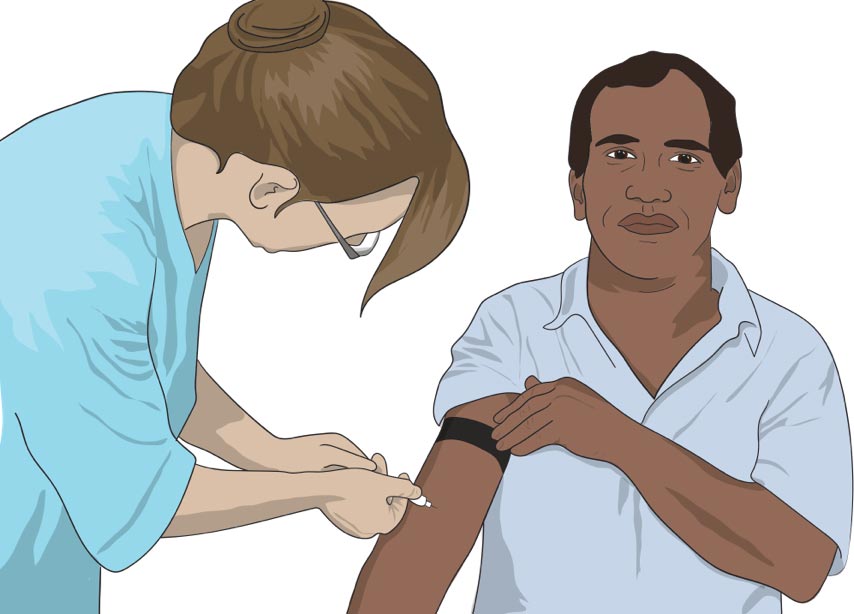- Home
- Finding out you have cancer
- Tests for cancer

Finding out you have cancer


Tests for cancer
If you have health problems that you doctor think might be related to cancer you will need to undergo medical tests and examinations. These tests will help work out what the problem is.
Not all problems or tests end up showing cancer – some tests can help show it is not cancer.
People who already know they have cancer often get sent for tests too. These tests are to see if cancer has spread to other parts of the body or not, or if it is causing any problems inside the body.
This page lists some tests for cancer that are often used. These tests are mostly done in hospitals or special clinics. With some of the tests, the person getting the test might have an anaesthetic that puts you to sleep while your medical team completes the tests and take cares of you. These tests can take a few hours, from getting ready, getting the test done then waking up and getting checked by the doctor.
Life with and after cancer
FIND OUT MORE
Where can I get help and support?
FIND OUT MORE
Types of tests and their descriptions
Biopsy: a doctor takes a tiny part of the lump or tumour inside the body – cells – to see if they are healthy or not. This test shows if cancer is in the body.
Bronchoscopy: a test where a long tube with a tiny light and camera attached to it is put down your throat into your lungs so a doctor can have a look.
Colonoscopy: a test where a tube with a tiny light and camera attached to it is put gently into your bottom to have a look at the bowel.
CT scan / CAT scan: a test that takes pictures of the inside of the body to help a doctor find a tumour or find out what is wrong. The initials stand for ‘computerised tomography’ or ‘computerised axial tomography’. Sometimes, a coloured liquid is swallowed or put into the body with a needle – it is a type of dye to help some things be seen more clearly. This is called contrast.
Cystoscopy: a test where a thin tube with a tiny light and camera is put into your bladder where wee comes out.
Gastroscopy: a test where a tube with a tiny light and camera attached to it is put gently into the throat, stomach and upper part of the tummy (small intestine).
Laparoscopy: a test where a doctor puts a tube with a light and camera into your belly so that can look inside.
Lumbar puncture: a test to take fluid out of your spine to check for any problems.
Mammogram: an x-ray test that takes pictures of breast tissue to show up lumps or changes.
MRI scan: a test that takes pictures of the inside of the body. You need to lay down and a machine moves around your body. The machine is very noisy, which can be a bit frightening at first. The machine doesn't touch you. MRI stands for ‘magnetic resonance imaging’. Sometimes, a coloured liquid is swallowed or put into the body with a needle – it is a type of dye to help some things be seen more clearly. This is called contrast.
PET scan: a special type of scan that takes pictures of the inside of the body to look at cancer more clearly, using a liquid that is injected into the body. PET stands for 'positron emission tomography'.
Ultrasound: A test where a hand-held special camera is moved over your body to get a picture of what is going on inside the body, looking at the part the doctor wants to check. It can show where and how big a lump is, if there is one.
X-ray: a picture that is taken of inside the body, looking at the part the doctor wants to check. It can show if there is a lump, and where and how big it is.
Yarn with your doctor
If you want to know more about tests for cancer, yarn with your doctor, nurse or Aboriginal and/or Torres Strait Islander health worker.
You can also yarn with mob who have had these tests and ask about their experiences. You can always take someone with you to have tests. Check out the information on the following pages if your tests are considered Women’s Business or Men’s Business.
All tests are done in a very clean, safe way under strict rules for your health and safety.
Find out more about Checking for cancer – what to expect

